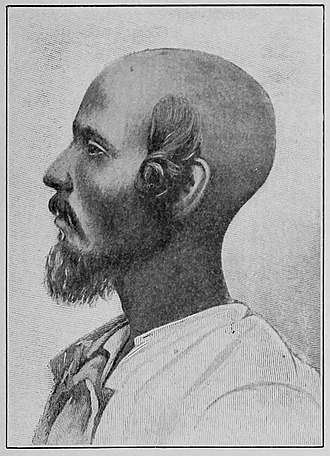Payot
Payot (Hebrew: פֵּאָה, plural: פֵּאוֹת), also spelled pe'ot, peyot, or payos, are long sidelocks or sideburns that are left to grow without cutting, in adherence to a Jewish religious mandate derived from the Torah. The practice is most commonly associated with Hasidic and Haredi male followers, but it is also observed to varying degrees in other Jewish communities. The requirement is based on a verse in the Book of Leviticus (19:27), which states, "You shall not round off the corners of your heads, nor shall you mar the corners of your beard." Jewish scholars interpret this commandment as prohibiting the shaving or cutting of the hair in certain areas, leading to the distinctive practice of growing payot.
Biblical and Talmudic Origins
The origin of payot is found in the Torah, specifically in the Book of Leviticus 19:27. The Talmud, a central text in Rabbinic Judaism, further discusses the interpretation of this verse, elaborating on the specific areas of the head and face that should not be shaved or cut. The Talmudic sages debate the extent and manner in which hair should be grown to fulfill this commandment, leading to various practices among Jewish communities.
Cultural and Religious Significance
The wearing of payot is more than a mere observance of a biblical commandment; it carries deep cultural and religious significance. It serves as a physical symbol of the wearer's adherence to Jewish law and his commitment to Jewish identity and values. In many Hasidic and Haredi communities, the style and length of payot can also signify allegiance to a particular Rebbe or Hasidic dynasty.
Variations in Practice
The manner in which payot are worn can vary significantly among different Jewish communities. Some men may twist or curl their payot, while others simply let them hang straight. The length and styling of payot can also differ, with some individuals choosing to tuck them behind their ears or wear them prominently in front of the ears. The practice of growing payot is not universally observed by all Jewish men, and interpretations of the biblical commandment can vary among different rabbinic authorities.
Contemporary Issues and Debates
In modern times, the practice of wearing payot has sometimes led to controversy and debate, both within and outside the Jewish community. Issues of religious freedom, identity, and the challenges of maintaining religious traditions in a secular society have all been part of the discourse surrounding payot. Additionally, individuals wearing payot have occasionally faced discrimination or harassment, highlighting the tensions that can arise between religious practice and societal norms.
See Also
Transform your life with W8MD's budget GLP-1 injections from $125.
W8MD offers a medical weight loss program to lose weight in Philadelphia. Our physician-supervised medical weight loss provides:
- Most insurances accepted or discounted self-pay rates. We will obtain insurance prior authorizations if needed.
- Generic GLP1 weight loss injections from $125 for the starting dose.
- Also offer prescription weight loss medications including Phentermine, Qsymia, Diethylpropion, Contrave etc.
NYC weight loss doctor appointments
Start your NYC weight loss journey today at our NYC medical weight loss and Philadelphia medical weight loss clinics.
- Call 718-946-5500 to lose weight in NYC or for medical weight loss in Philadelphia 215-676-2334.
- Tags:NYC medical weight loss, Philadelphia lose weight Zepbound NYC, Budget GLP1 weight loss injections, Wegovy Philadelphia, Wegovy NYC, Philadelphia medical weight loss, Brookly weight loss and Wegovy NYC
|
WikiMD's Wellness Encyclopedia |
| Let Food Be Thy Medicine Medicine Thy Food - Hippocrates |
Medical Disclaimer: WikiMD is not a substitute for professional medical advice. The information on WikiMD is provided as an information resource only, may be incorrect, outdated or misleading, and is not to be used or relied on for any diagnostic or treatment purposes. Please consult your health care provider before making any healthcare decisions or for guidance about a specific medical condition. WikiMD expressly disclaims responsibility, and shall have no liability, for any damages, loss, injury, or liability whatsoever suffered as a result of your reliance on the information contained in this site. By visiting this site you agree to the foregoing terms and conditions, which may from time to time be changed or supplemented by WikiMD. If you do not agree to the foregoing terms and conditions, you should not enter or use this site. See full disclaimer.
Credits:Most images are courtesy of Wikimedia commons, and templates, categories Wikipedia, licensed under CC BY SA or similar.
Contributors: Prab R. Tumpati, MD

